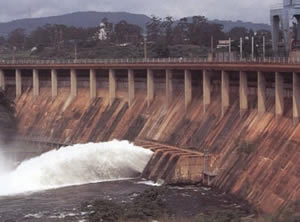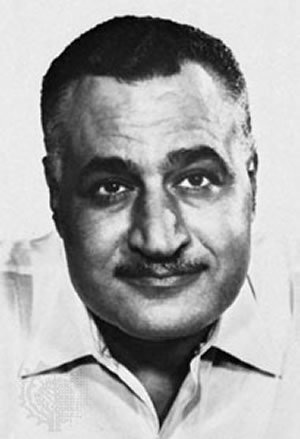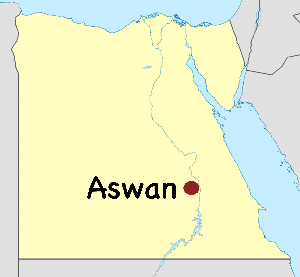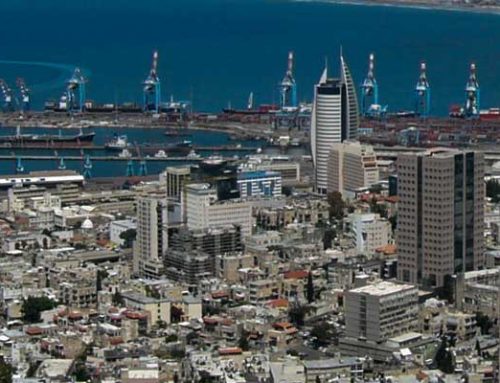For thousands of years, the Nile River overflowed its banks every spring as snow and spring rains in the mountains of East Africa transformed into a torrent of water. The annual flooding carried dead and decaying plants in its muddy solution. The muddy water is called silt, which created excellent topsoil for Egyptian farmers.
Egyptian leaders have dreamed of building a dam to control the Nile River for over a century. In addition to regulating the Nile’s flow, a large dam could store water for Egypt’s dry season, and rushing waters flowing from the dam could provide Egypt with free hydroelectricity–electric power generated by water movement.

Aswan_Dam
The Aswan High Dam controls the annual flooding of the Nile.
The British built a dam in the city of Aswan in southern Egypt in 1902. What is now called the Aswan Low Dam was, at that time, the largest masonry dam in the world. Despite its size, the original Aswan Dam could not provide Egypt with proper control of the great river.
Egyptian President Gamal Abdel Nasser hoped to build a larger dam. In 1956, Nasser asked the United States and Great Britain for financial assistance. The Western nations refused because of Nasser’s close ties with the Soviet Union.

Gamal Abdel Nasser Hussein (1918 – 1970) was President of Egypt from 1956 until his death.
The Egyptian president then seized control of the Suez Canal from Great Britain. He asked for and received assistance from the Soviet Union to build a larger dam in Aswan.
The Aswan High Dam was completed in 1970. The new dam controlled the annual flooding of the Nile, but it created both benefits and consequences for the Egyptian people. The water held back by the Aswan Dam created Lake Nasser, the world’s largest manufactured lake. The water from Lake also Nasser provided new fishing areas in southern Egypt. Additionally, by releasing water into the Nile during the dry season, Egyptian farmers can grow an extra crop yearly. The dam has also helped tourism in Egypt because the height of the Nile is now reliable enough for cruise ships to travel the ancient river’s waters throughout most of the year.
The Cold War
The United States, Great Britain, and other Western nations were in the Cold War with the Soviet Union from 1945 to 1990. The Soviet Union was a military empire that included Russia and several “Soviet Republics.”
Although the two sides had no direct military conflict, many feared the Cold War would lead to World War III. The Western nations and the Soviets took opposing sides in several conflicts, particularly in Korea, Vietnam, and Afghanistan. The West and the Soviets sought to influence developing nations and were wary of leaders who were too close to the other side. Nasser tried to be close to both sides, but his relationship with the Soviets resulted in the United States and Great Britain refusing to fund the Suez Canal.
The Cold War ended in 1990 with the fall of the Soviet Union, but the worsening strain between Russia and the West over the war in Ukraine suggests that the Cold War may be restarting.
Critics charged building the Aswan Dam was unwise. The project was more expensive than expected. Further, since the creation of the Aswan Dam, the farmers north of Aswan have had to use expensive fertilizers in place of the topsoil provided by the river silt. Fish had once fed on the silt, and the people downstream depended on fishing from the river. Without the muddy water, fewer fish survive. The human impact of the Aswan High Dam was also great. More than 100,000 Egyptian people and an additional 50,000 Sudanese people were forced to move because their homes would soon be under the water held back by the Aswan High Dam.
Resources
Download this lesson as Microsoft Word file or as an Adobe Acrobat file.
Listen as Mr. Dowling reads this lesson.
Mr. Donn has an excellent website that includes a section on the Middle East and North Africa.

aswan map
The Nile no longer overflows its banks north of Aswan.




